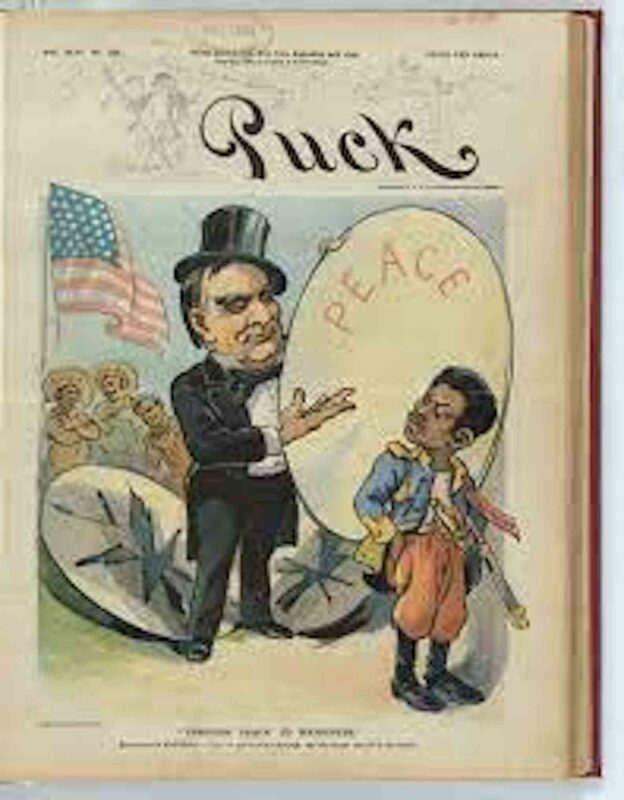October 1898: As Filipinos draft Constitution, US haggles with Spain

The irony of the October 1898 Philippine Constitution was its roots and similarity to the Constitution of the United States.
The month of October 1898 began and ended with parallel tracks. A committee of the Philippine Congress based in Malolos was drafting a very progressive constitution. At the same time, the American treaty negotiators at Paris refused to meet and hear the Filipino arguments and points of view for Philippine independence. Unfortunately, the parallel tracks involving the Philippines and the United States never intersected with compromise and reason.
The Philippine Congress appointed 19 of its members for a committee to draft the Philippine Constitution. Two of the most respected members were Felipe Calderon and Felipe Buencamino. The committee had a first draft ready by October 8, 1898. The first draft was eventually presented and debated.
There were three competing plans for the constitution. The first one was the Mabini Plan. Apolinario Mabini had been very prominent in the revolutionary movement in the Philippines. His plan was rejected by the committee. The second proposal was the Paterno Plan. Pedro Paterno was the president of the Congress. His plan resembled the old Spanish design and was soundly rejected. The third proposal was the Felipe Calderon Plan. Calderon had researched the constitutions of many countries throughout the world and proposed a hybrid or commonality of the various constitutions. Supporters of the Calderon’s plan made the best arguments and was adopted by the drafting committee.
The draft Constitution protected and advocated for individual and alien rights. The electoral system was a representative democracy where the citizens of the Philippine Republic would elect their representatives to the legislative branch.
The Constitution had conceived three branches of government: legislative, executive and judicial. The committee recommended a strong legislative branch to check and balance a potentially too powerful executive branch. There was significant concern for needed safeguards against a powerful and uncontrolled executive.
The draft Constitution made the legislative branch unicameral or one chamber. The committee decided that the legislative branch could be expanded in the future to a bicameral or two chambers. If needed, there could be upper and lower chambers in the legislature.
The irony of the October 1898 Philippine Constitution was its roots and similarity to the Constitution of the United States. At the time when the Philippines was presenting a proposition for a new representative democracy to the world, the United States was playing imperial hardball with Spain at the Paris peace talks.
One of the most controversial topics during the debates on the draft Constitution was the issue of a state religion. The support for or against the separation of church and state was about 50/50. The arguments for the separation of church and state eventually prevailed by only one vote. The committee members who supported a separation declared that they were not anti-religion but only anti-clerical, based on the abuses by many clerics during the harsh days of Spanish colonialism.
During this busy time in October 1898 at Malolos, the American troops and Emilio Aguinaldo forces around Manila had reached an informal quietude. There were occasional rumors that the Filipino rebels were going to attack the American positions, but in general things were peaceful.
The biggest issue was October’s heat. The temperature was 109 degrees on October 1. There was also the fear of smallpox. There had been numerous cases of smallpox recorded in Manila. The most challenging fight for the Americans was against a multitude of tropical diseases.
In three months, the Americans had established three independent newspapers: Amerikan Soldier, Manila Times, and Freedom. The newspapers were a constant source of gossip and tales.
There were rumors among the American soldiers that they were heading home soon. They had only enlisted for the duration of the Spanish-American War. The common soldier thought that the war was essentially over. They were bored with their routine military duties, and they wanted to go home. They also heard rumors from Paris that United States would provide protection to the new Philippine Republic.
With the relative peace and quiet in Manila, the American soldiers were able to explore the city. Many were opting to eat at Philippine restaurants instead of the military chow lines with mainly canned food.
Many soldiers, who were not catholic, were fascinated with the grand Roman Catholic churches in Manila and their beautiful services. American attendance at Catholic masses increased.
Frequently for the entertainment of Filipinos, Spaniards and Americans, the Colorado Band played concerts in Luneta Park and Manila Opera House. The U.S. Army chaplains also used the Manila Opera House for religious services.
If the American negotiators at the Paris peace talks had a chance to travel to the Philippines and witness the quietude of Manila and the deliberations of the Philippine Congress in October 1898, perhaps the outcome at Paris could have been dramatically different.
Dennis Edward Flake is the author of three books on Philippine-American history. He is a public historian and a former seasonal park ranger in interpretation for the National Park Service at the Eisenhower National Historic Site in Gettysburg, PA. He can be contacted at: flakedennis@gmail.com

